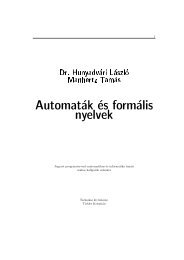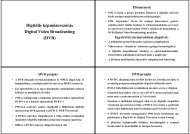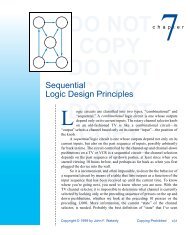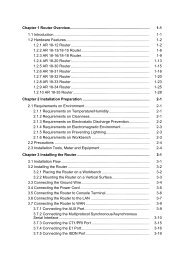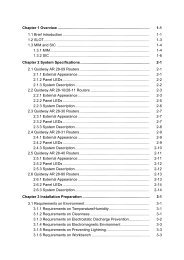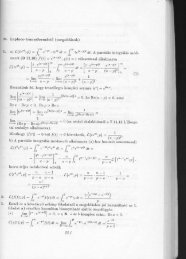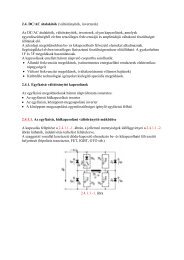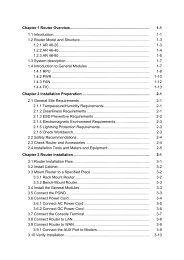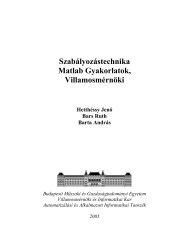- Page 1 and 2: 219710345674x163CLKCLRLDENPENTABCDQ
- Page 3 and 4: Section 8.1 Sequential Circuit Docu
- Page 5 and 6: Section 8.1 Sequential Circuit Docu
- Page 8 and 9: 568 Chapter 8 Sequential Logic Desi
- Page 12 and 13: 572 Chapter 8 Sequential Logic Desi
- Page 14 and 15: 574 Chapter 8 Sequential Logic Desi
- Page 16 and 17: 576 Chapter 8 Sequential Logic Desi
- Page 18 and 19: 578 Chapter 8 Sequential Logic Desi
- Page 20 and 21: 580 Chapter 8 Sequential Logic Desi
- Page 22 and 23: 582 Chapter 8 Sequential Logic Desi
- Page 24 and 25: 584 Chapter 8 Sequential Logic Desi
- Page 26 and 27: 586 Chapter 8 Sequential Logic Desi
- Page 28 and 29: 588 Chapter 8 Sequential Logic Desi
- Page 30 and 31: 590 Chapter 8 Sequential Logic Desi
- Page 32 and 33: 592 Chapter 8 Sequential Logic Desi
- Page 34 and 35: 594 Chapter 8 Sequential Logic Desi
- Page 36 and 37: 596 Chapter 8 Sequential Logic Desi
- Page 38 and 39: 598 Chapter 8 Sequential Logic Desi
- Page 40 and 41: 600 Chapter 8 Sequential Logic Desi
- Page 42 and 43: 602 Chapter 8 Sequential Logic Desi
- Page 44: 604 Chapter 8 Sequential Logic Desi
- Page 47 and 48: Section 8.4 Counters 607DO NOT COPY
- Page 49 and 50: Section 8.4 Counters 609DOTable 8-1
- Page 51 and 52: Section 8.4 Counters 611DO NOT COPY
- Page 53 and 54: Section 8.4 Counters 613DO NOT COPY
- Page 55 and 56: Section 8.5 Shift Registers 615DO N
- Page 57 and 58: Section 8.5 Shift Registers 617DO N
- Page 59 and 60: Section 8.5 Shift Registers 619DO N
- Page 61 and 62:
Section 8.5 Shift Registers 6218.5.
- Page 63 and 64:
Section 8.5 Shift Registers 623DO N
- Page 65 and 66:
Section 8.5 Shift Registers 625DOA
- Page 67 and 68:
Section 8.5 Shift Registers 627DO N
- Page 69 and 70:
Section 8.5 Shift Registers 629DO N
- Page 71 and 72:
Section 8.5 Shift Registers 631DO N
- Page 73 and 74:
Section 8.5 Shift Registers 633DO N
- Page 75 and 76:
Section 8.5 Shift Registers 635coun
- Page 77 and 78:
Section 8.5 Shift Registers 637DO N
- Page 79 and 80:
Section 8.5 Shift Registers 639DO N
- Page 81 and 82:
Section 8.5 Shift Registers 641DO N
- Page 83 and 84:
Section 8.5 Shift Registers 643andD
- Page 85 and 86:
Section 8.5 Shift Registers 645DO N
- Page 87 and 88:
Section 8.5 Shift Registers 647DO N
- Page 89 and 90:
Section *8.6 Iterative versus Seque
- Page 91 and 92:
Section *8.6 Iterative versus Seque
- Page 93 and 94:
Section 8.7 Synchronous Design Meth
- Page 95 and 96:
Section 8.7 Synchronous Design Meth
- Page 97 and 98:
Section 8.7 Synchronous Design Meth
- Page 99 and 100:
Section 8.8 Impediments to Synchron
- Page 101 and 102:
Section 8.8 Impediments to Synchron
- Page 103 and 104:
Section 8.8 Impediments to Synchron
- Page 105 and 106:
Section 8.8 Impediments to Synchron
- Page 107 and 108:
Section 8.9 Synchronizer Failure an
- Page 109 and 110:
Section 8.9 Synchronizer Failure an
- Page 111 and 112:
Section 8.9 Synchronizer Failure an
- Page 113 and 114:
Section 8.9 Synchronizer Failure an
- Page 115 and 116:
Section 8.9 Synchronizer Failure an
- Page 117 and 118:
Section 8.9 Synchronizer Failure an
- Page 119 and 120:
Section 8.9 Synchronizer Failure an
- Page 121 and 122:
Section 8.9 Synchronizer Failure an
- Page 123 and 124:
Section 8.9 Synchronizer Failure an
- Page 125 and 126:
Section 8.9 Synchronizer Failure an
- Page 127 and 128:
References 687DOAs we mentioned in
- Page 129 and 130:
Exercises 689DO NOT COPY74x1692CLOC
- Page 131 and 132:
Exercises 691DO NOT COPYZ is assert
- Page 133 and 134:
Exercises 6938.54DOModify the ABEL
- Page 135 and 136:
Exercises 695DO NOT COPYSYNCINASYNC



